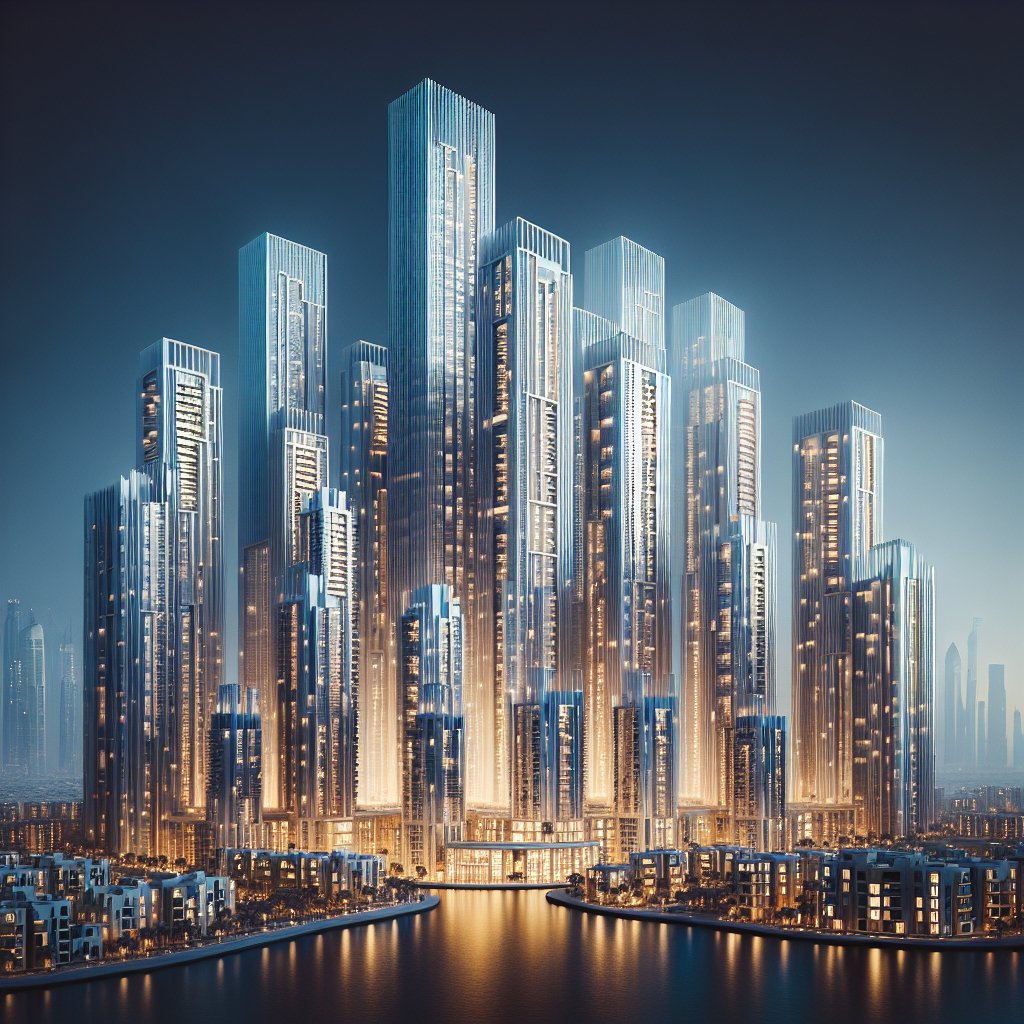Dubai, a city renowned for its opulence and architectural marvels, is now turning its attention to redefining affordable housing through modern architecture. This shift marks a significant departure from its traditional focus on luxury and extravagance, aiming to address the growing demand for accessible living spaces in a rapidly expanding urban environment.
The Evolution of Dubai’s Architectural Landscape
Dubai’s skyline is a testament to its ambitious vision and rapid development. Over the past few decades, the city has transformed from a modest trading port into a global metropolis, boasting some of the world’s most iconic structures, such as the Burj Khalifa and the Palm Jumeirah. This architectural evolution has been driven by a desire to establish Dubai as a hub of innovation and luxury, attracting tourists and investors from around the globe.
However, as the city continues to grow, so does the need for affordable housing solutions. The influx of expatriates and the rising cost of living have created a demand for housing that caters to a broader demographic. Recognizing this need, Dubai’s government and private developers are now focusing on creating affordable housing projects that incorporate modern architectural principles.
Modern architecture in Dubai is characterized by its emphasis on sustainability, functionality, and aesthetic appeal. These principles are being integrated into affordable housing projects to ensure that they are not only cost-effective but also environmentally friendly and visually appealing. This approach is redefining what affordable housing can look like, challenging the notion that affordability must come at the expense of quality and design.
Innovative Approaches to Affordable Housing
One of the key strategies being employed in Dubai’s affordable housing initiatives is the use of sustainable building materials and technologies. Developers are increasingly turning to eco-friendly materials, such as recycled steel and concrete, to reduce construction costs and minimize environmental impact. Additionally, the incorporation of energy-efficient systems, such as solar panels and smart home technologies, is helping to lower utility costs for residents, making these homes more affordable in the long run.
Another innovative approach is the use of modular construction techniques. This method involves the prefabrication of building components off-site, which are then assembled on-site. Modular construction not only reduces construction time and costs but also allows for greater flexibility in design. This flexibility enables developers to create diverse housing options that cater to different needs and preferences, from single-family homes to multi-unit complexes.
Furthermore, Dubai is exploring the concept of mixed-use developments, which combine residential, commercial, and recreational spaces within a single project. These developments are designed to create vibrant, self-sustaining communities that offer residents easy access to essential services and amenities. By integrating affordable housing into these mixed-use projects, Dubai is ensuring that residents have access to a high quality of life without the need for long commutes or additional expenses.
The Role of Government and Policy
The success of Dubai’s affordable housing initiatives is largely dependent on the support and involvement of the government. Recognizing the importance of affordable housing in maintaining social stability and economic growth, the Dubai government has implemented a range of policies and incentives to encourage the development of affordable housing projects.
One such policy is the allocation of land specifically for affordable housing developments. By providing land at reduced costs or through long-term leases, the government is enabling developers to lower their overall project expenses, making it more feasible to offer affordable housing options. Additionally, the government is offering financial incentives, such as tax breaks and subsidies, to developers who commit to building affordable housing units.
Moreover, the government is actively working to streamline the regulatory process for affordable housing projects. By reducing bureaucratic hurdles and expediting approvals, the government is facilitating the timely completion of these projects, ensuring that the growing demand for affordable housing is met promptly.
Challenges and Future Prospects
Despite the progress being made, there are still challenges that need to be addressed in Dubai’s affordable housing sector. One of the primary challenges is the perception of affordable housing as being of lower quality or less desirable than luxury developments. To overcome this stigma, developers must continue to prioritize design and quality in their projects, demonstrating that affordable housing can be both attractive and functional.
Another challenge is ensuring that affordable housing remains accessible to those who need it most. As demand continues to rise, there is a risk that prices may increase, making these homes less affordable for low- and middle-income families. To mitigate this risk, the government and developers must work together to implement measures that maintain affordability, such as rent control and income-based pricing models.
Looking to the future, Dubai’s commitment to redefining affordable housing through modern architecture holds great promise. As the city continues to innovate and adapt, it has the potential to serve as a model for other urban centers facing similar challenges. By prioritizing sustainability, functionality, and inclusivity, Dubai is paving the way for a new era of affordable housing that meets the needs of its diverse population while maintaining its reputation as a leader in architectural excellence.









